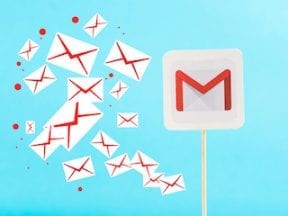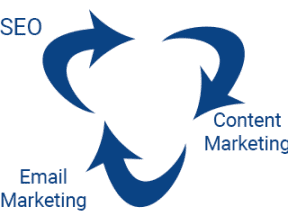I’m often asked about the best time to send a marketing email. The answer depends on several factors. A well-timed email can increase open and click rates. A poorly timed one can drive unsubscribes.
In this post, I’ll address how to determine the best send times for your email program.
The first step is to determine the goal or objective of the email. In my experience, the performance of emails from a single retailer can vary depending on the purpose. Common goals for email marketing include:
- Driving traffic to a website. General site traffic emails have always been most effective mid-week — mid-morning or mid-afternoon. Mondays and Fridays tend not to perform as well. According to Campaign Monitor data, below, the highest open rates occur on Tuesdays.
- Driving traffic to a physical location. Some emails are meant to encourage physical visits. The performance is usually best on evenings and weekends. Most recipients will read an email on their smartphone. Thus these messages can be effective for spontaneous visits when folks are running errands, shopping, and socializing.
- Encourage website shopping. Analyzing patterns of previous purchases can help determine when to send shopping emails. For example, an apparel retailer may experience peak fall sweater sales in late September. Thus emails promoting those items should follow that purchasing timeframe.
- Abandoned cart or browse. Triggered emails based on abandoned browse sessions or abandoned shopping carts typically perform best when sent immediately after the abandonment.
- Request review or feedback. Send emails asking for feedback when recipients have the most time. This is typically mid-week or early-evening, post-dinner hours.
- General awareness. A general awareness campaign can be sent almost any time to be effective. Conveying the main message in the email’s subject line and preheader can be worthwhile even if the recipient doesn’t open it.
Tools
Send time optimization is a feature of many email marketing platforms. Typically the software will track when each subscriber tends to open and click emails and then automatically send accordingly. Send time optimization is helpful for emails with similar objectives. But it can be counterproductive for emails with differing goals, such as driving web traffic versus soliciting feedback. Moreover, STO requires recipients with a history of opens and clicks — not new subscribers or new email programs.
View time optimization. In April, Verizon Media launched what it calls “view time optimization.” Verizon owns AOL and Yahoo, two prominent email providers. View time optimization, according to Verizon, tracks when an individual is logged into the email account and then pushes the email messages at that time. Open rates have reportedly increased up to four-fold when using this new capability.
Targeting AOL and Yahoo recipients when they are looking at their email is clearly useful. But lumping non-view-time-optimization recipients, such as Gmail users, into the same period could lead to unsubscribed.
News and developments. There are always global or regional factors that impact the timing of emails, including:
- Crises and events. Covid-19 is an excellent example of how a global event can impact email marketing. Other examples are concerts and sporting events.
- Weather can impact the timing of your emails. Blizzards, storms, droughts, sunny days — all can alter email performance. Don’t send an email to a recipient in a hurricane. Or consider special coupon codes that reflect the conditions, such as the example below from Urban Outfitters.

A recipient’s local weather can impact email performance. This example from Urban Outfitters offers a special coupon code for snow days.
- Holidays. Send marketing emails during the holiday shopping season with enough time for recipients to order ahead or otherwise shop and receive the merchandise in time for the event. Holiday email calendars, with deployment dates, can greatly help.
- Time zones. Many email service providers can adjust send times based on the location of the recipient. For example, recipients can receive an email at, say, 10 a.m. local time no matter if it’s Eastern Time or Pacific Time. If the software does not have this feature, segment your list as much as possible to ensure recipients in California aren’t receiving emails three hours earlier than those in New York.




